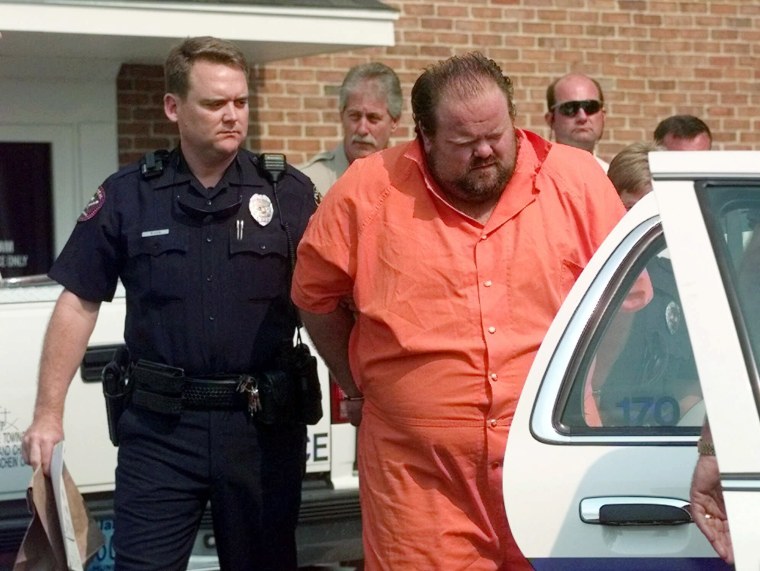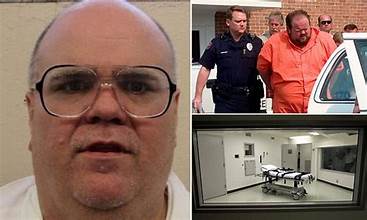Unredacted Alabama court documents shed new light on execution procedures
As the state prepares to execute death row inmate Alan Eugene Miller by nitrogen gas, he’s expressed fears over the novel method: “You’re telling me to practice killing myself.”

Unredacted documents posted by Alabama officials in the federal courts’ electronic filing system reveal new details about the nation’s first nitrogen gas execution carried out in January, including the identity of the state’s execution captain, his impressions from inside the death chamber and the concerns of another inmate who is set to die by the same punishment.
The documents shed light on the state’s largely confidential execution process and were filed this week in a pending capital case for Alan Eugene Miller, who survived a lethal injection attempt in 2022 and is scheduled to be executed by nitrogen gas in September. Miller filed a federal lawsuit in March seeking to halt his execution, citing the state’s past execution failures and concerns that the method of nitrogen hypoxia would add pain and prolong death.
The unredacted documents include the transcript of a July 10 deposition of Miller in which he expresses concern that the execution team will have trouble securing a mask on his face to breathe in the nitrogen gas.
“Are these people that are going to fit [the mask], what’s their training?” Miller said.
Miller, who weighs 350 pounds, suggests a medical professional should place the mask on him instead of the execution captain, which is the current protocol. He also said he once worked a job in which regular masks didn’t fit his face.
“I’ve got a big old head. Nothing else fits my head,” Miller, 59, said in his deposition.
The Alabama attorney general’s office and the state Department of Corrections are aware the unredacted documents were filed in Miller’s case but declined to comment.
A motion to seal filed earlier this week says the state’s response to Miller’s request for a preliminary injunction “includes references to deposition testimony taken from the captain of the execution team, which has been designated as highly confidential.”
The state’s execution captain and another member of the team are identified in the documents — a detail that lawyers for the state have previously fought to suppress, arguing the disclosure of execution team names would put them at risk of harassment and threats.
In the motion, lawyers for the state request to file a redacted version of their response and to file an unredacted version under seal, meaning some of the contents of the depositions should be inaccessible to the public.
Alabama conducted its third execution of the year on Thursday evening, using lethal injection to put to death Keith Edmund Gavin, who was convicted in the killing of a delivery driver in 1998.
The unredacted depositions offer insight into what happened in the state’s execution chamber on Jan. 25, when Alabama put convicted murderer Kenneth Smith to death, marking the first time a state had used nitrogen hypoxia, a method in which a person breathes nitrogen gas through a mask apparatus, depriving him of oxygen.
Like Miller, Smith had also survived a prior attempt to execute him by lethal injection in 2022, when prison staff tried unsuccessfully to insert needles into a suitable vein.
The use of nitrogen gas in an execution had been untested in the United States, and medical experts had said even a small amount of oxygen in the nitrogen-filled mask could lead to slow asphyxiation, prolonging the time it would take to die while risking vomiting or pain.
“Violently shaking, thrashing:” Witness details first ever nitrogen gas execution
Eyewitnesses to Smith’s execution by nitrogen reported him violently thrashing while strapped to a table. The state denied his movements were due to oxygen leaking into the mask, and according to Miller’s deposition, the state’s lawyer told Miller a medical expert for the state said that if Smith “had cooperated, if he had taken deep breaths during his execution, he would have lost consciousness much sooner.”
“You’re basically telling Kenny Smith to cooperate with y’all killing him?” Miller said.
“I’m not quite understanding,” he continued. “You’re telling me to practice killing myself. I mean I thought y’all put people to sleep. I thought like you go to a dentist and they put on the mask and you go, you go like, go under and then y’all turn the stuff on.”
Miller, who was convicted of capital murder in the August 1999 shootings of co-workers Lee Holdbrooks, Scott Yancy and Terry Jarvis, was originally scheduled to be executed by lethal injection in September 2022. The procedure was abandoned when prison staff couldn’t find a vein after trying for more than an hour.
The state agreed it would not attempt to execute Miller for a second time using lethal injection, and that Miller had previously opted for nitrogen hypoxia when it was an untested method.
Miller has claimed the state Department of Corrections refused to check whether the mask would fit him before the execution, but in his deposition he declined an offer from the state’s lawyers to have it fit-tested before the procedure.
“I think this is psychological terror right here,” Miller said.
In his deposition, the execution captain described his training on securing masks and said he has “not encountered any person for whom the mask did not fit securely and effectively.”
But expert testimony included in Miller’s court filing argues the state’s protocol does not guarantee a mask with an airtight seal.
“A correctional officer will almost certainly be unable to determine whether oxygen is leaking into the mask via visual observation alone,” said Dr. Philip Bickler, a professor of anesthesia and perioperative care at the University of California, San Francisco, who co-authored the 2024 study “Evidence Against Use of Nitrogen for the Death Penalty.”
Bickler in his testimony also disputed the assumption that Smith may have held his breath during his execution to try to purposefully fight the procedure.
“As a preliminary matter, this is inconsistent with the reports of multiple witnesses who observed Mr. Smith gasping for breath for multiple minutes,” he said. “Based on my professional opinion, the reported signs of obvious physical distress that Mr. Smith suffered during his execution were from a prolonged and slow suffocation.”
The execution captain said in his deposition that he hadn’t noticed whether Smith had been breathing or holding his breath while he observed the reading from a pulse oximeter, which measures oxygen levels in the blood.
On the day after the execution, Alabama Attorney General Steve Marshall fended off concerns that Smith did not become unconscious as quickly as expected. He called the process “textbook.”
–
Source: NBC News



